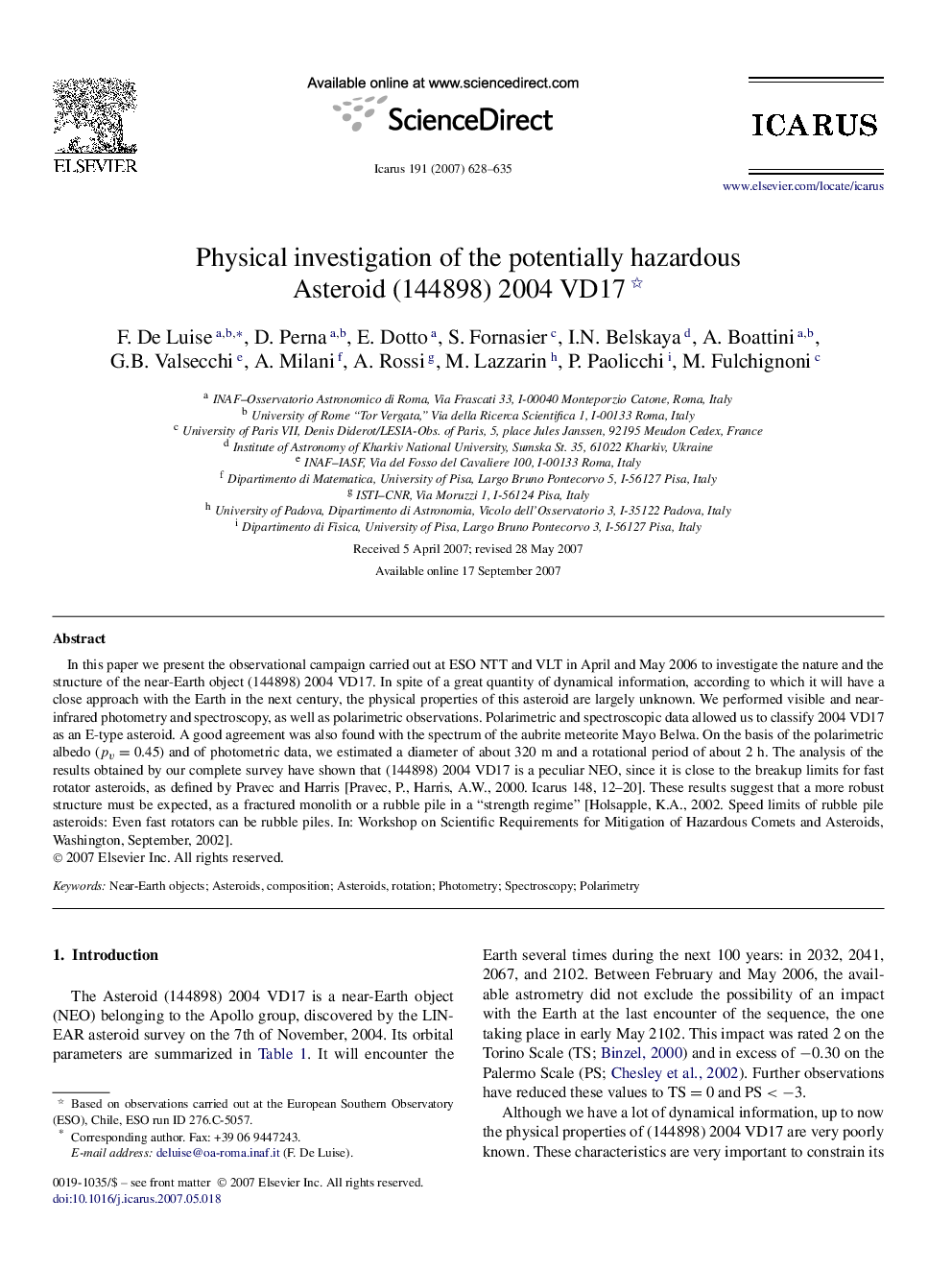| کد مقاله | کد نشریه | سال انتشار | مقاله انگلیسی | نسخه تمام متن |
|---|---|---|---|---|
| 1775477 | 1021195 | 2007 | 8 صفحه PDF | دانلود رایگان |

In this paper we present the observational campaign carried out at ESO NTT and VLT in April and May 2006 to investigate the nature and the structure of the near-Earth object (144898) 2004 VD17. In spite of a great quantity of dynamical information, according to which it will have a close approach with the Earth in the next century, the physical properties of this asteroid are largely unknown. We performed visible and near-infrared photometry and spectroscopy, as well as polarimetric observations. Polarimetric and spectroscopic data allowed us to classify 2004 VD17 as an E-type asteroid. A good agreement was also found with the spectrum of the aubrite meteorite Mayo Belwa. On the basis of the polarimetric albedo (pv=0.45pv=0.45) and of photometric data, we estimated a diameter of about 320 m and a rotational period of about 2 h. The analysis of the results obtained by our complete survey have shown that (144898) 2004 VD17 is a peculiar NEO, since it is close to the breakup limits for fast rotator asteroids, as defined by Pravec and Harris [Pravec, P., Harris, A.W., 2000. Icarus 148, 12–20]. These results suggest that a more robust structure must be expected, as a fractured monolith or a rubble pile in a “strength regime” [Holsapple, K.A., 2002. Speed limits of rubble pile asteroids: Even fast rotators can be rubble piles. In: Workshop on Scientific Requirements for Mitigation of Hazardous Comets and Asteroids, Washington, September, 2002].
Journal: Icarus - Volume 191, Issue 2, 15 November 2007, Pages 628–635